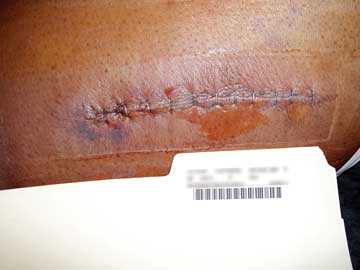When your patients leave your facility, they should know all the do’s and don’ts of wound care.
If their wound is changing colors, they should know what that means, and if it starts to feel dry, they should know who to call. They need to understand that a dip in the hot tub is a never event while their incision is healing.
“For surgical wounds, it’s the patient and caregiver who have to do the management,” says Kathleen Heneghan, PhD, MSN, RN, PN-C.
“There’s very little to help guide the family in doing that.”
Patients yearn for guidance to care for their surgical wounds, says Dr. Heneghan, assistant director for surgical patient education for the American College of Surgeons (ACS). But the resources to help them navigate their care can be hard to find. Even if they have a visiting aide or nurse checking in during the week, patients still need the basics to navigate those post-op days of recovery at home.
Here are 5 ways you can send your patients home with confidence.
.svg?sfvrsn=be606e78_3)

.svg?sfvrsn=56b2f850_5)